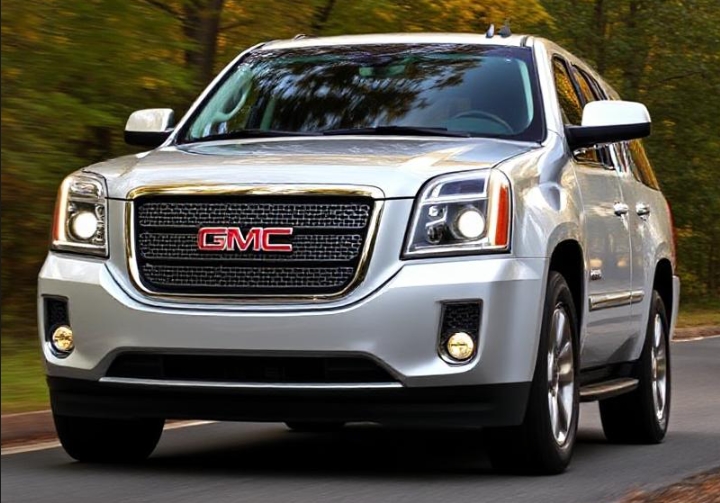The Evolution of the Renault Avantime
The Renault Avantime stands out as one of the most distinctive and unconventional vehicles of the late 20th and early 21st centuries. Its unique blend of coupe styling and minivan practicality made it a bold experiment in automotive design, capturing the imagination of enthusiasts and critics alike. This article traces the evolution of the Renault Avantime, covering its development, production years, model variants, and trim levels.
Origins and Concept Development (Late 1990s)
The Avantime’s story begins in the late 1990s, a period marked by rapid innovation and experimentation in the automotive industry. Renault, seeking to diversify its lineup and explore niche markets, partnered with the French design firm Carrosserie Alpine to develop a vehicle that combined the spaciousness and versatility of a minivan with the sleek aesthetics of a coupe.
The concept was unveiled as the Renault Avantime at the 1999 Geneva Motor Show. It was conceived as a “Grand Tourer” with a focus on style, comfort, and driving experience. The avant-garde design, featuring a coupe-like profile with a large panoramic glass roof and a spacious interior, aimed to appeal to buyers seeking something different from traditional family cars.
Production Years and Key Milestones
The Renault Avantime was produced from 2001 to 2003, a relatively short lifespan that nonetheless left a lasting impression. Its limited production run and distinctive design have made it a collector’s item today.
Manufacturing Details:
- Production Period: 2001–2003
- Factory: Renault’s Sandouville plant in France
- Number of Units: Approximately 8,000 units produced
Despite its innovative design, the Avantime faced challenges in the market, including high production costs, limited practicality compared to traditional minivans, and a niche appeal. These factors contributed to its brief production span.
Model Variants and Trim Levels
Throughout its production, the Renault Avantime was offered primarily in a single, relatively well-equipped trim, with some variations over the years. Unlike many other vehicles, the Avantime’s model lineup was not extensive, reflecting its niche positioning.
Initial Launch (2001):
Renault Avantime 3.0 V6 (Initial Model)
- Engine: 3.0-liter V6 engine (PRV V6)
- Power: Approximately 210 horsepower
- Transmission: 4-speed automatic transmission
- Features: Leather upholstery, climate control, premium audio, cruise control, and a panoramic glass roof
- Price Point: Positioned as a luxury niche vehicle
This first version was notable for its smooth V6 engine, offering a refined driving experience. It was designed to appeal to buyers seeking style and comfort rather than utility.
Facelift and Updates (2003):
In 2003, Renault introduced a minor facelift, primarily focusing on aesthetic updates and some feature enhancements.
Renault Avantime 2.0 dCi (Diesel Version)
- Engine: 2.2-liter dCi turbo-diesel (introduced later in production)
- Power: Around 125 horsepower
- Features: Similar to the V6 but with added emphasis on fuel efficiency
- Trim Levels: Basic, Luxe, and Initiale (highest trim)
The diesel variants aimed to broaden the appeal to buyers concerned with running costs, especially in European markets where diesel engines were popular.
Trim Levels Overview
Throughout its brief production run, the Avantime was predominantly offered in three main trim levels, which varied slightly over the years.
- Basic / Standard Trim:
- Focused on essential comfort and convenience
- Features included power windows, central locking, basic audio systems, and manual climate control
- Luxe Trim:
- Added upgraded interior materials, improved audio systems, and additional comfort features
- Leather upholstery options available
- Enhanced interior trim and better seat adjustments
- Initiale (Top-Level Trim):
- The most luxurious variant
- Included premium leather seats, climate control, upgraded audio, and more advanced features like parking sensors and a premium sound system
- Often featured unique badging and optional equipment packages
Over the course of production, Renault also offered a Special Edition in 2002 known as the Avantime Expression, which included additional cosmetic upgrades and limited-production features.
Design and Engineering Evolution
The Avantime’s design remained largely consistent throughout its production, characterized by:
- Exterior:
- A coupe-like silhouette with a large panoramic glass roof
- Distinctive, rounded bodywork with a high beltline
- Unique rear hatch design allowing for versatile cargo access
- Interior:
- Spacious, airy cabin with a high seating position
- Innovative use of materials and layout emphasizing comfort
- Large glass roof providing panoramic views
From an engineering perspective, the Avantime was based on the Renault Espace platform but heavily modified to achieve its distinctive styling. It utilized front-wheel drive, with some models featuring all-wheel drive (introduced in later variants) for improved handling.
Technical Highlights:
- Chassis: Modified Renault Espace platform
- Suspension: Independent MacPherson struts at the front and multi-link at the rear
- Brakes: Disc brakes on all four wheels
- Drive Options: Primarily front-wheel drive; some models with all-wheel drive
- Engines: 2.0L petrol, 3.0L V6, and later 2.2L diesel
.
MANY auto lovers not only spend time in their garages to tinker on their autos, but have other projects going on in there as well. Wood working is a popular pastime for the creative type of individual. Not sure what to make next? Or thinking about getting into this kind of hobby? There’s lots of possibilities… Here’s some of them…

.
Market Reception and Discontinuation
Despite its innovative design and features, the Avantime struggled to achieve widespread commercial success. Its high price point, limited practicality compared to traditional family vehicles, and niche appeal contributed to tepid sales.
The vehicle’s production was officially discontinued in 2003 after approximately 8,000 units were built. Renault shifted focus to other models, and the Avantime became a cult classic, admired for its bold styling and originality.
Legacy and Collectibility
Today, the Renault Avantime is regarded as a pioneering, if niche, vehicle that pushed the boundaries of automotive design. Its brief production run and distinctive appearance have made it a sought-after collector’s item among enthusiasts of unique automobiles.
Summary
| Year | Model & Variants | Key Features & Engine Options | Notes |
|---|---|---|---|
| 2001 | Avantime 3.0 V6 | 3.0L V6, 210 hp, leather, panoramic roof | Launch model, luxury focus |
| 2002 | Avantime Expression (Special Edition) | Cosmetic upgrades, limited edition | Aesthetic enhancements |
| 2003 | Avantime 2.0 dCi / 3.0 V6 (Facelift) | Diesel engine introduced, minor styling refresh | Final production year, diesel added |
Conclusion
The Renault Avantime’s evolution from concept to production exemplifies a bold attempt to redefine the crossover segment. With its innovative design, varied trim levels, and a brief yet impactful production run, the Avantime remains a symbol of automotive daring and creativity. While it was ultimately a commercial niche, its influence and uniqueness continue to inspire automotive design enthusiasts worldwide.
Note: As a niche vehicle, detailed records of all minor trim variations and regional differences may be limited. Nonetheless, the overview provided captures the core evolution and highlights of the Renault Avantime’s brief but memorable life.







